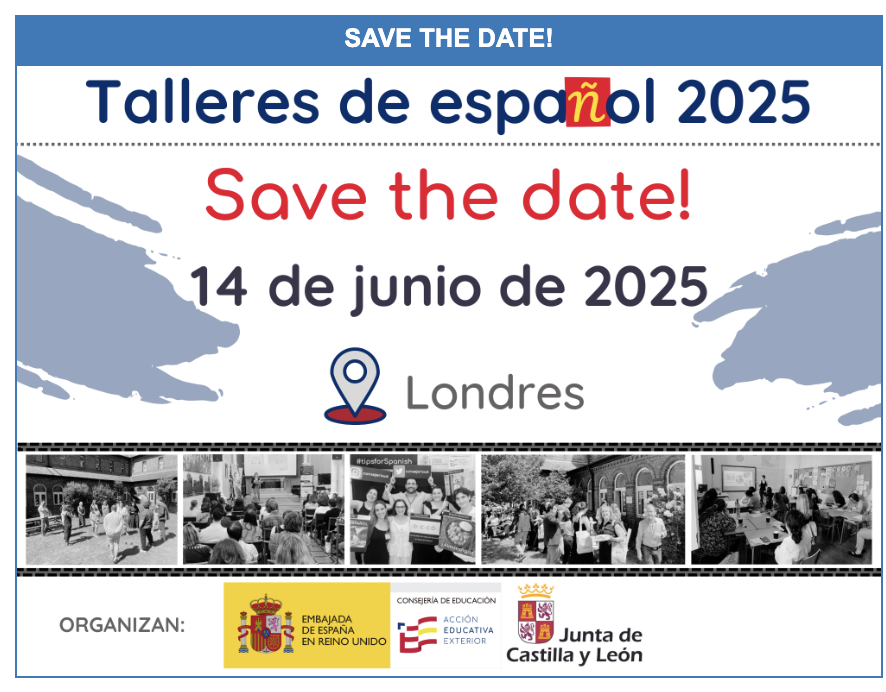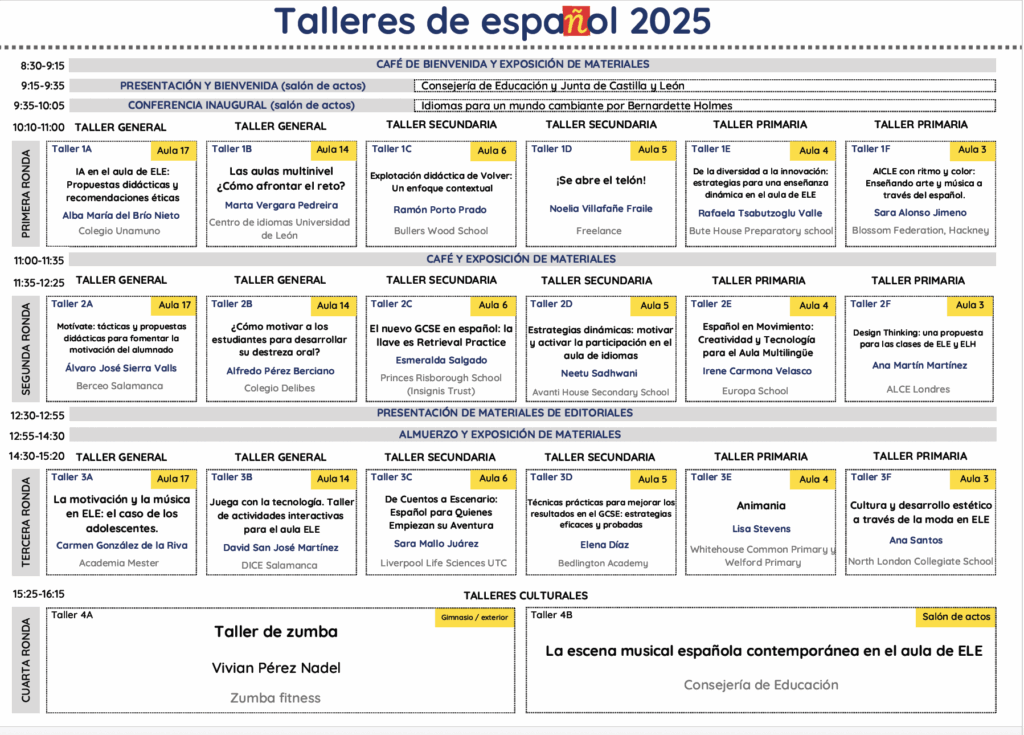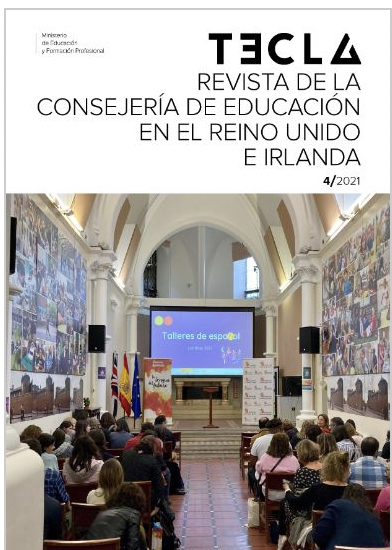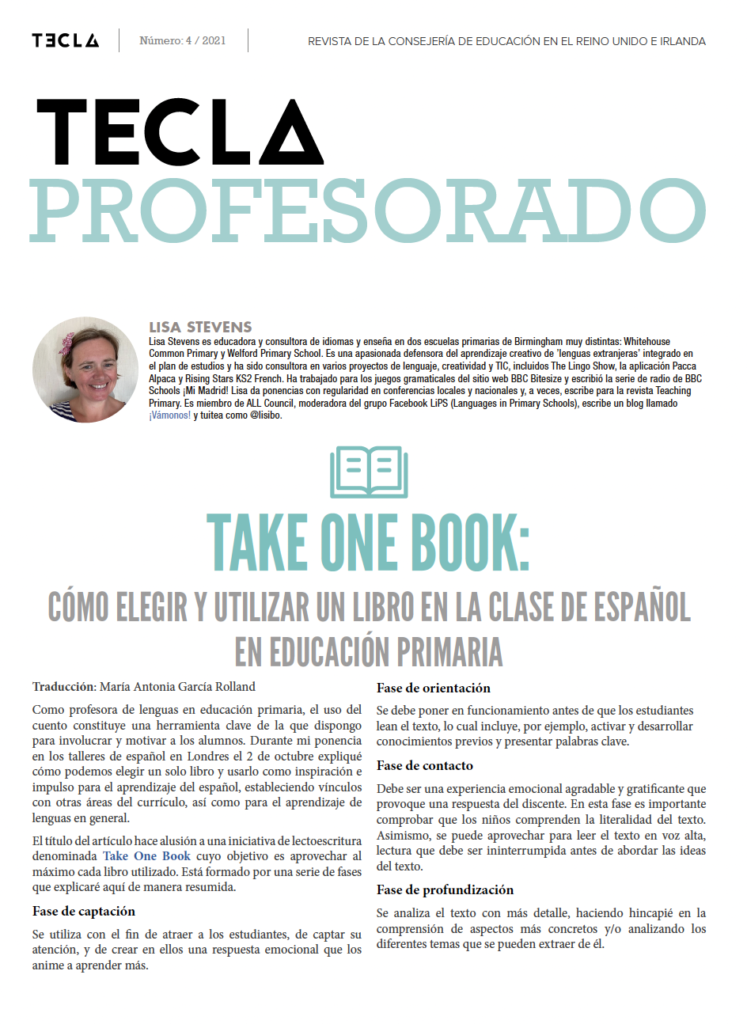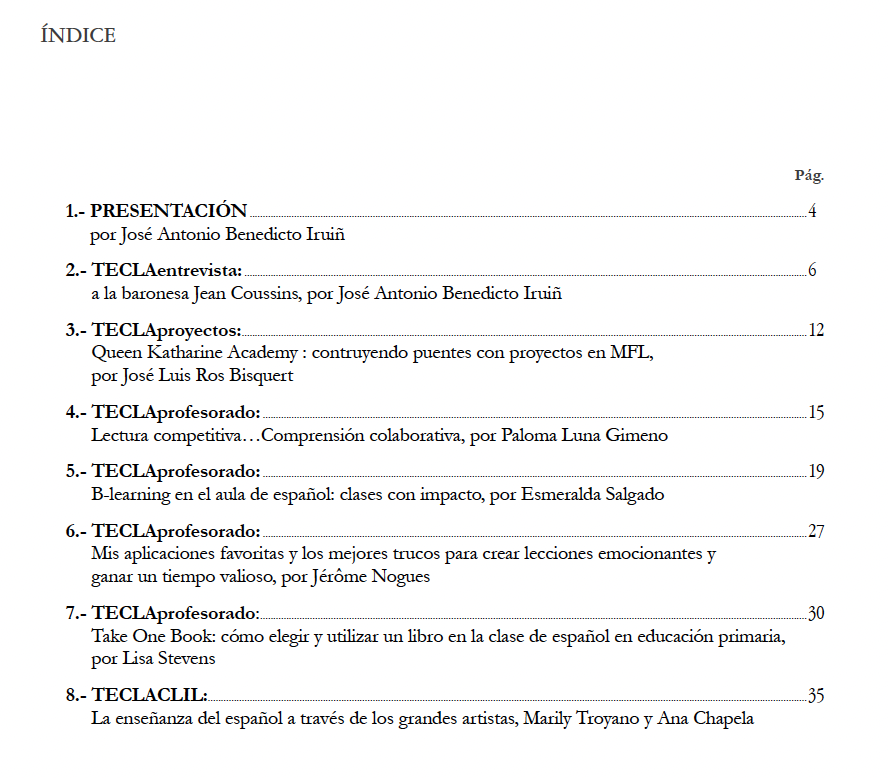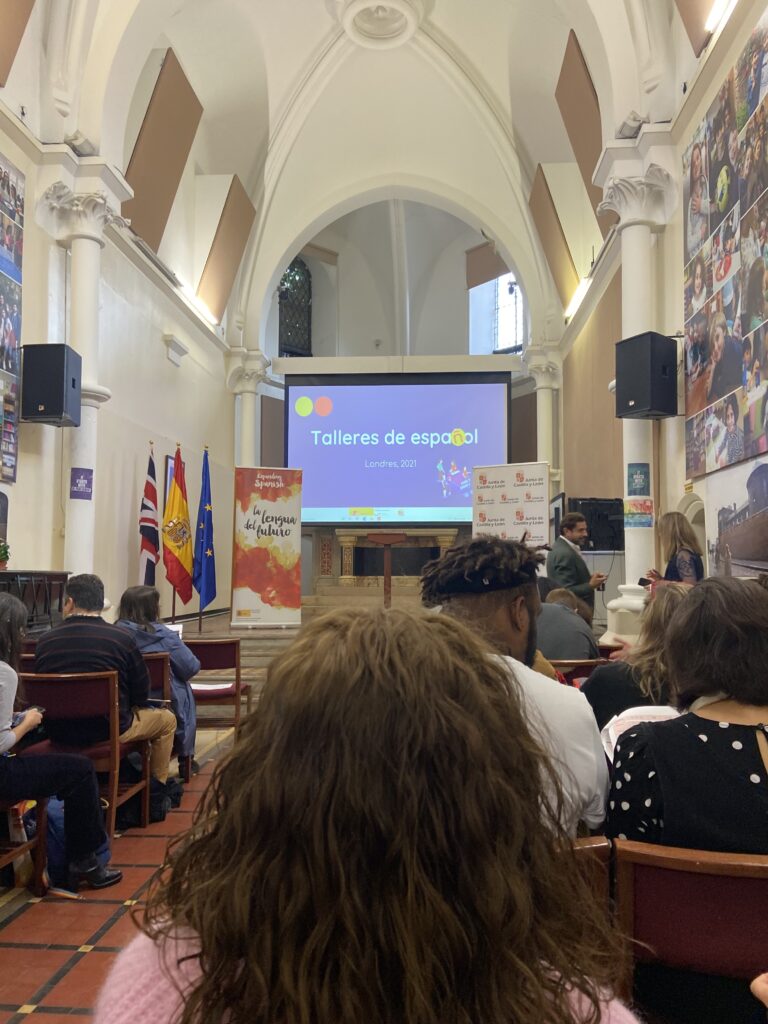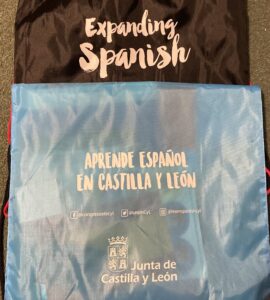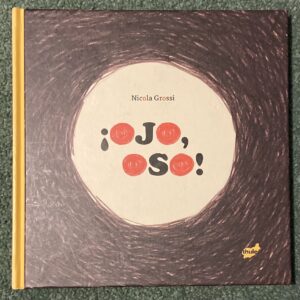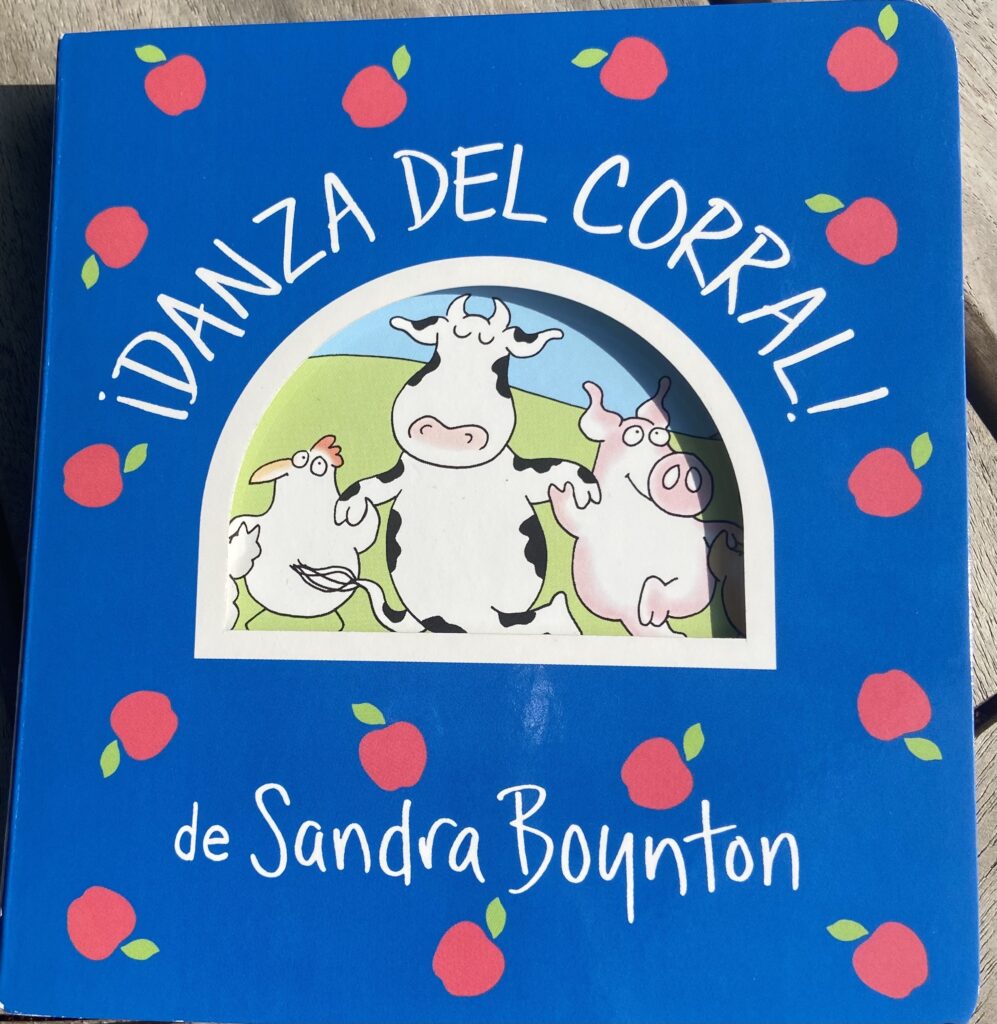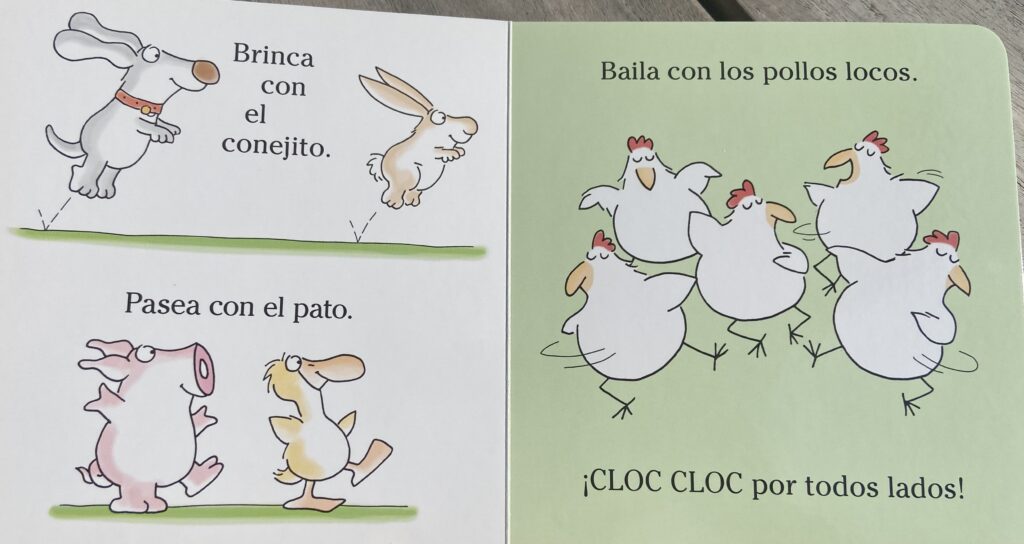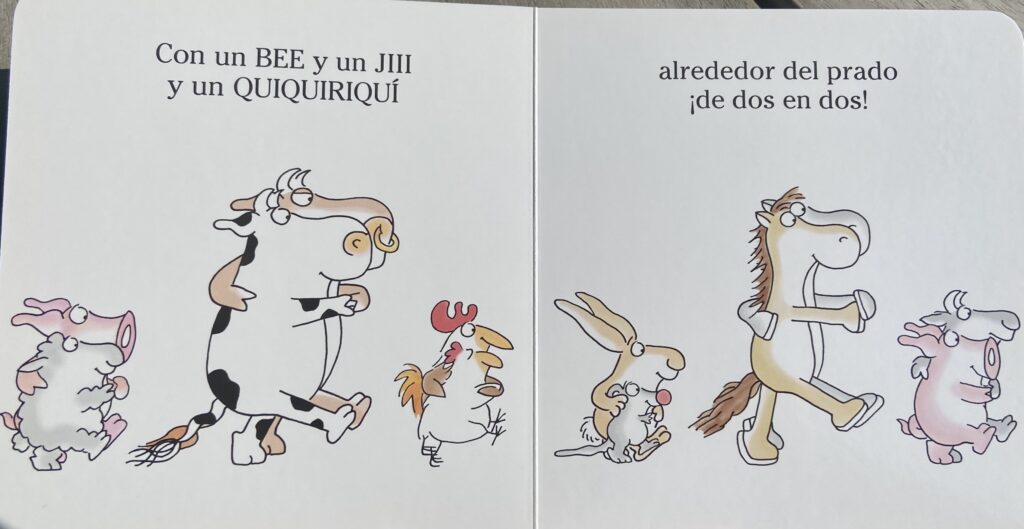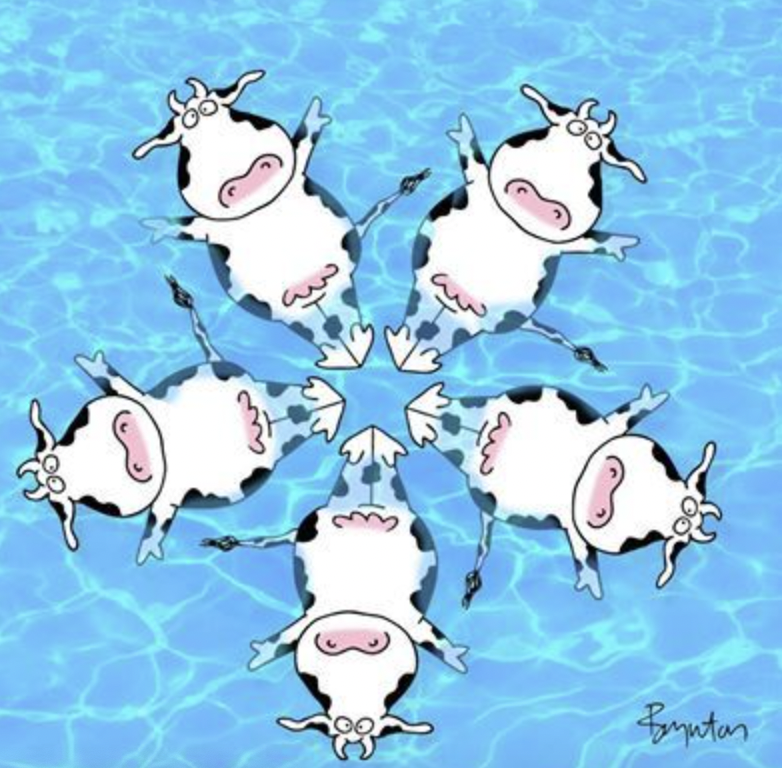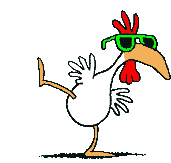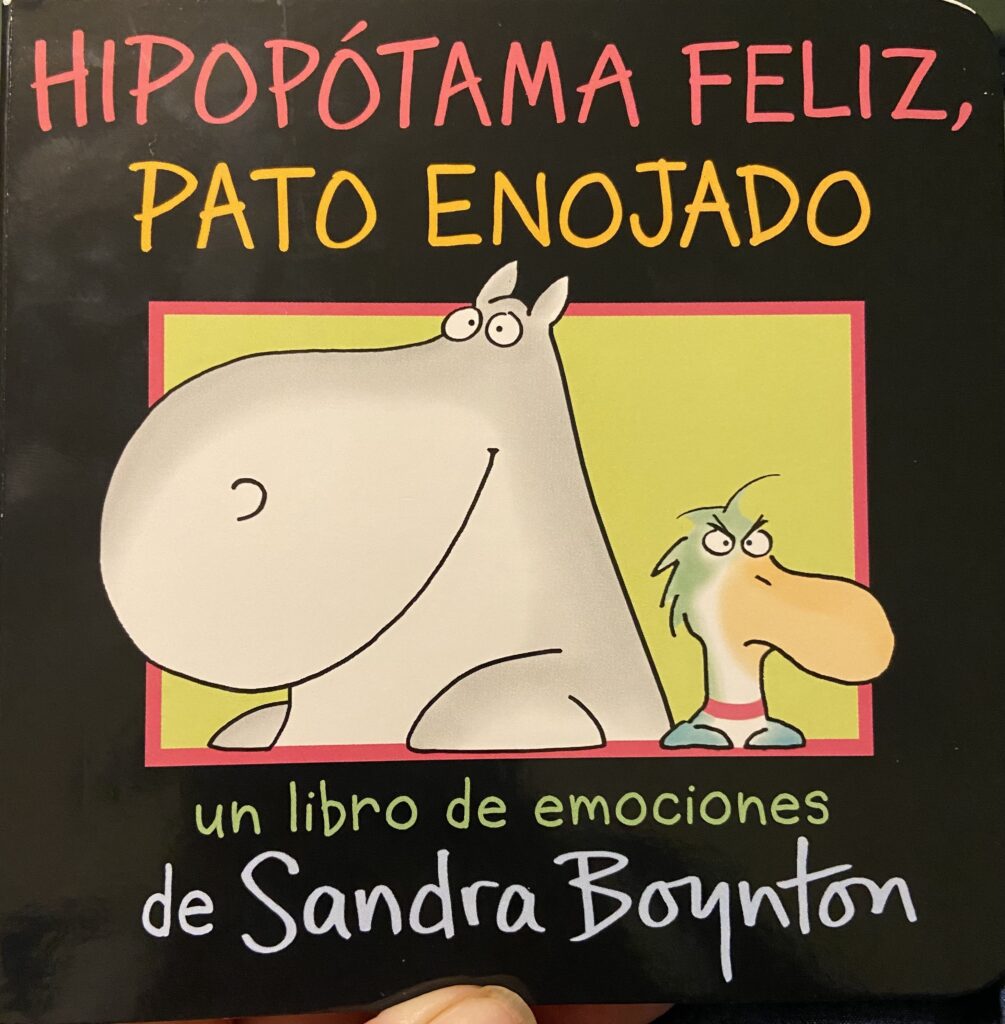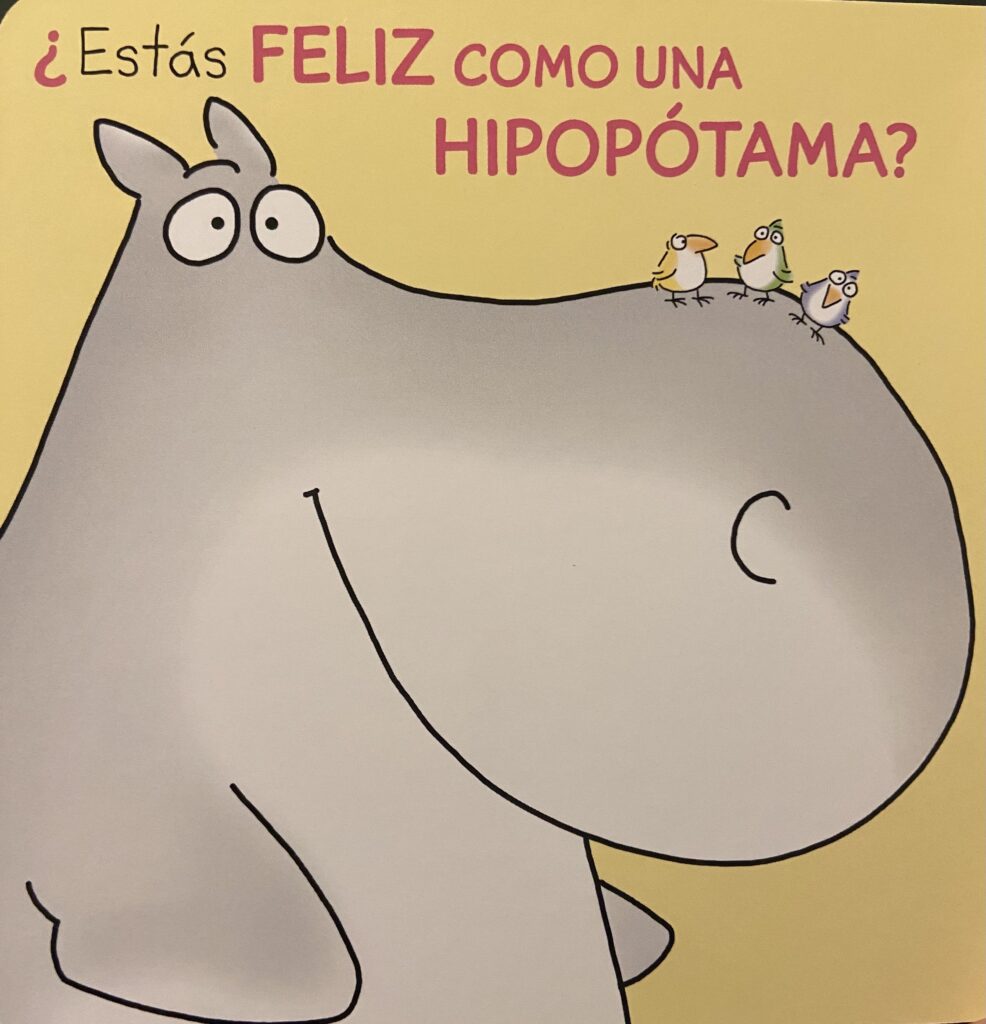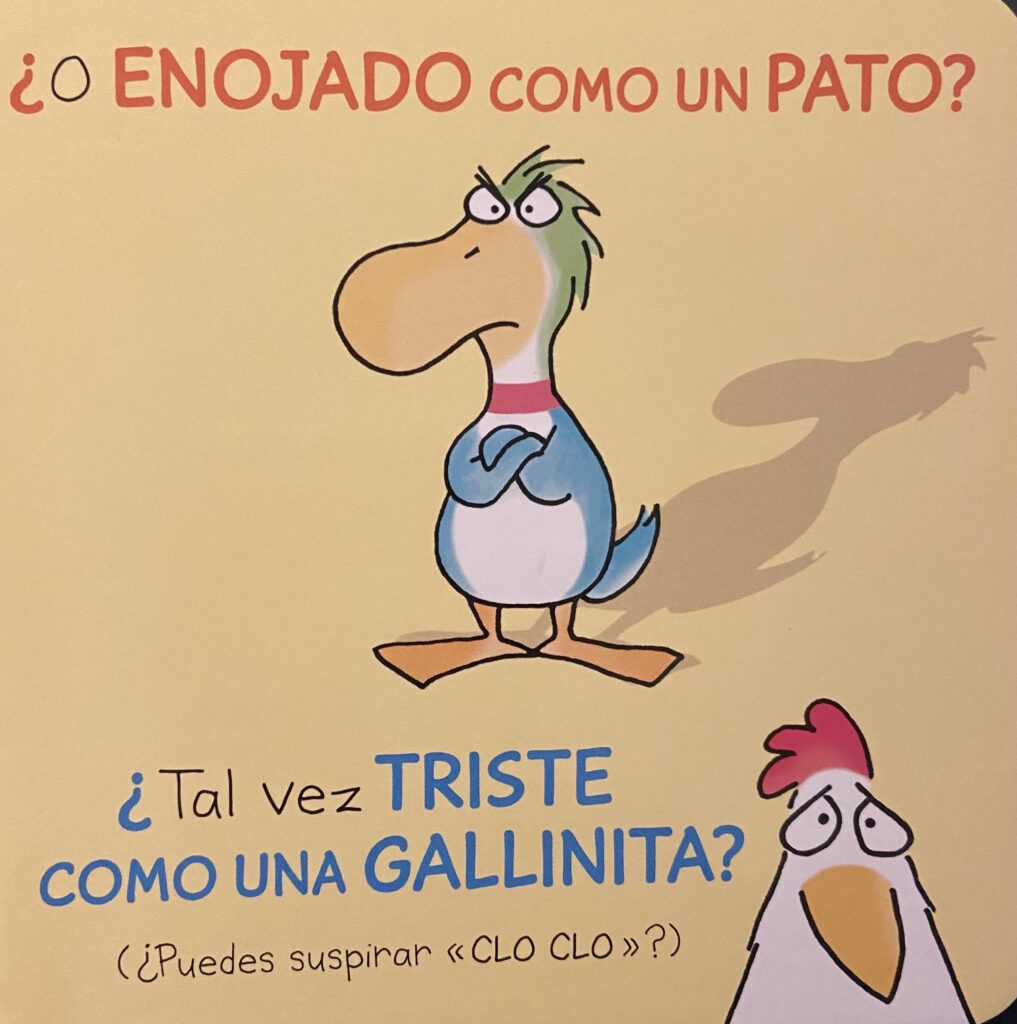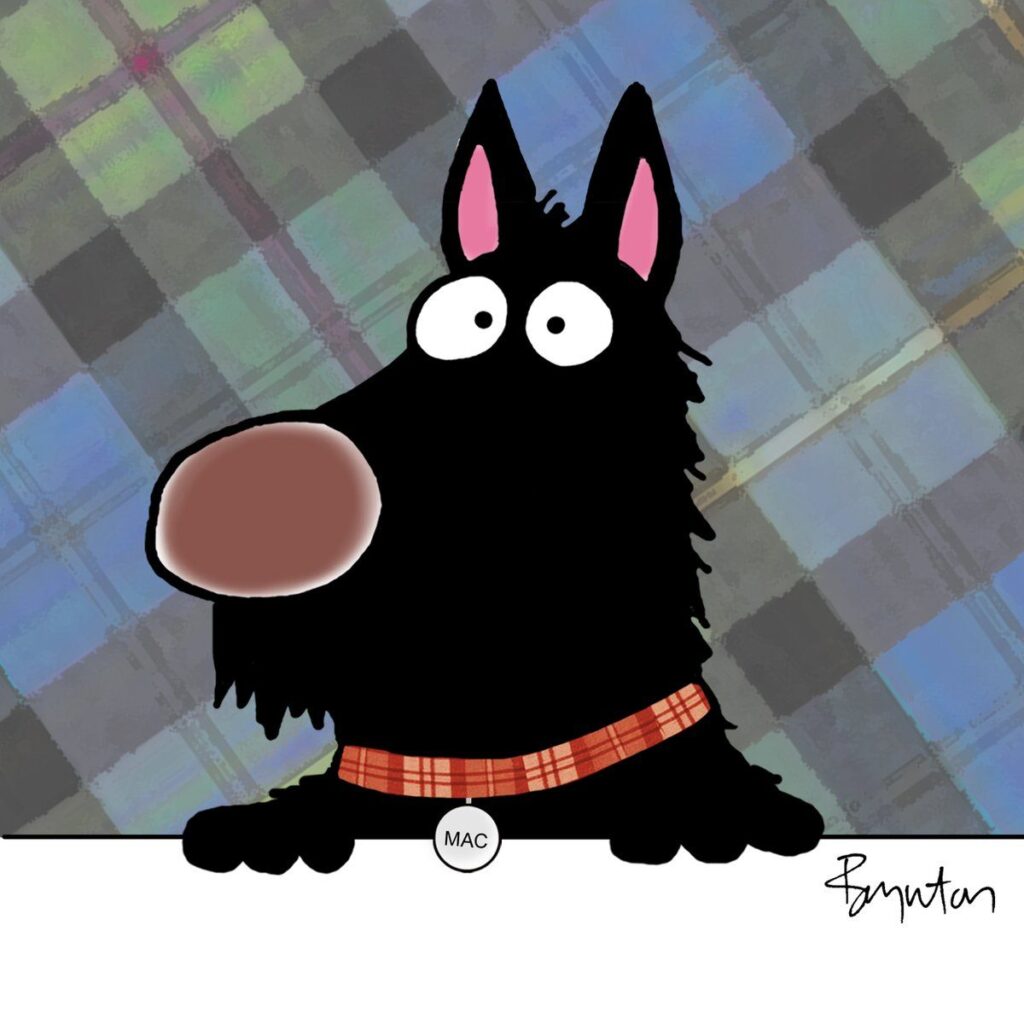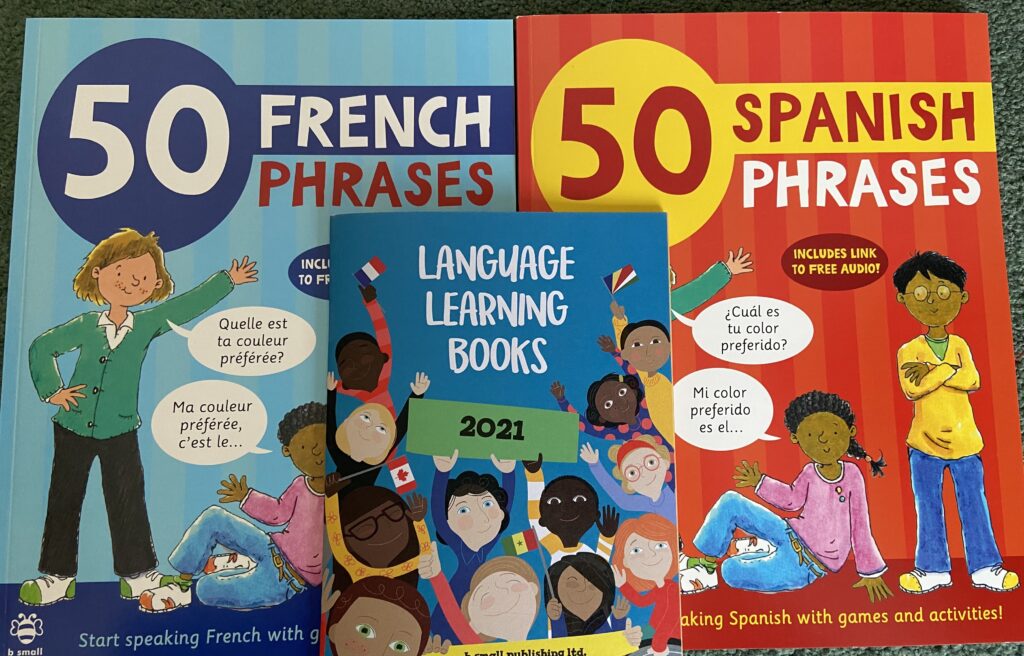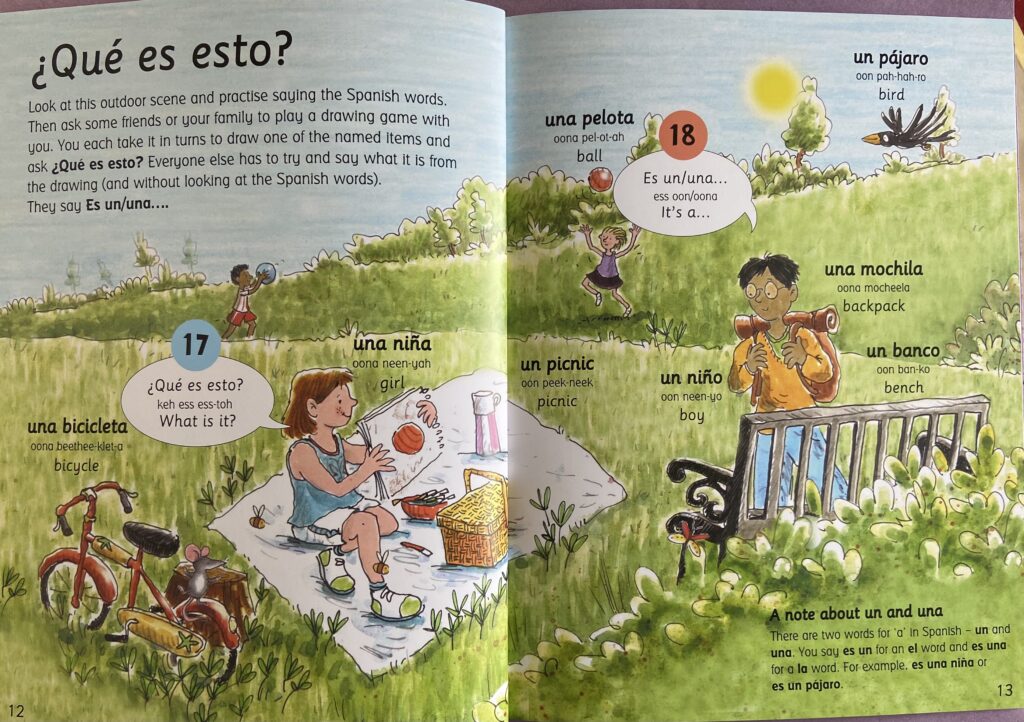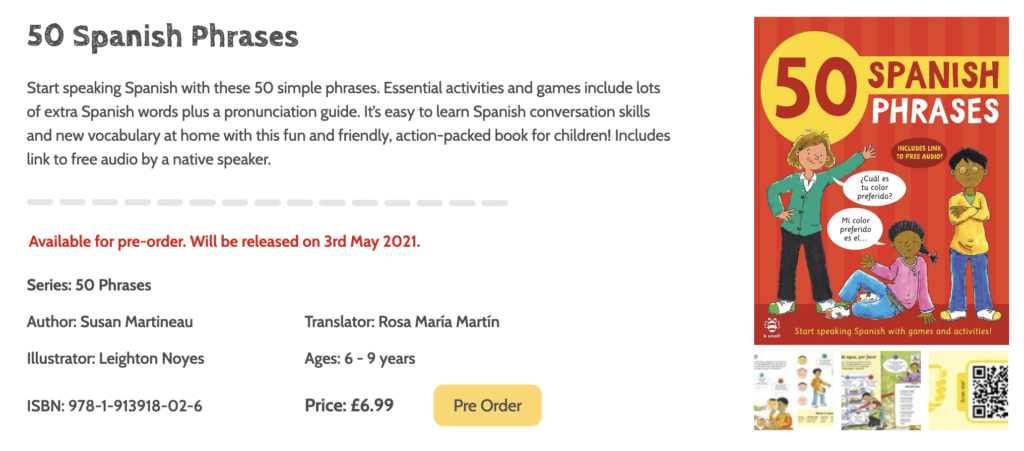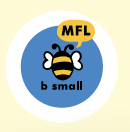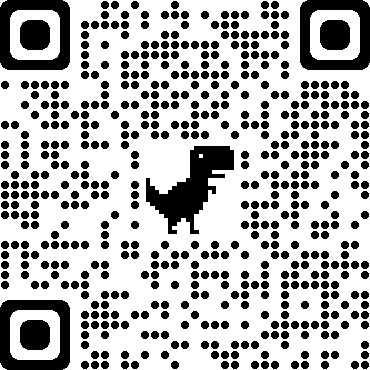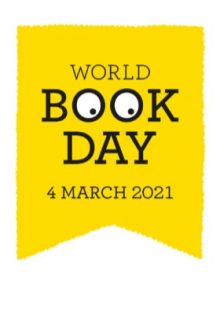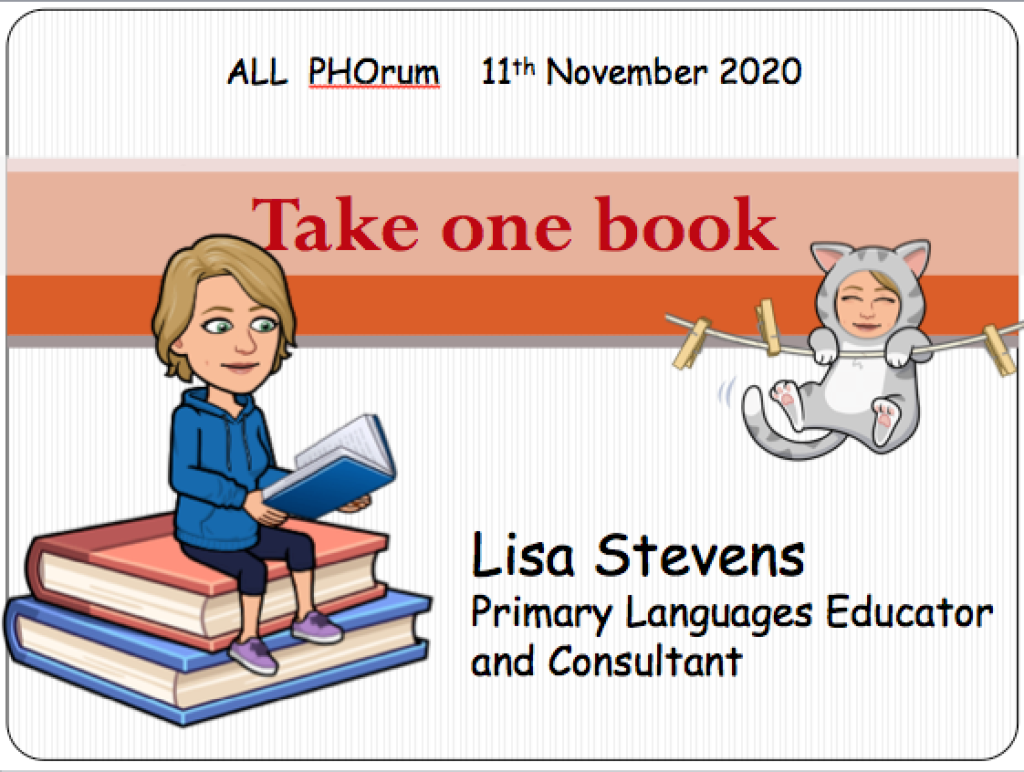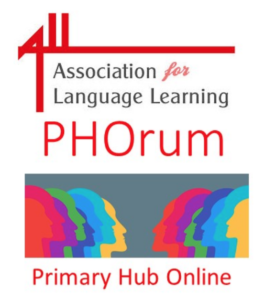
Over half term I went to Colmar to visit my youngest who is working as a British Council Language Assistant for the year. Whilst there I discovered what a beautiful and interesting place Colmar – and Alsace as a whole – is.
Whilst there, as usual I spent a while in the bookshops and picked out several books as potential purchases before settling on this one for several reasons.
- It’s cute!
- It’s repetitive.
- It’s culturally and linguistically specific to Alsace.
- The story is a traditional tale, the basis of which is familiar in many countries including the UK.
- It has a moral – working together they succeed in their ‘quest’
- It explains what I was eating from the bakery!
Everywhere you go in Colmar you see these two ‘characters’ –une cigogne or Störig, and une fillette avec un schlupfkapp (a little girl with a huge bow in her hair) If you click the words, you can find out more about them.
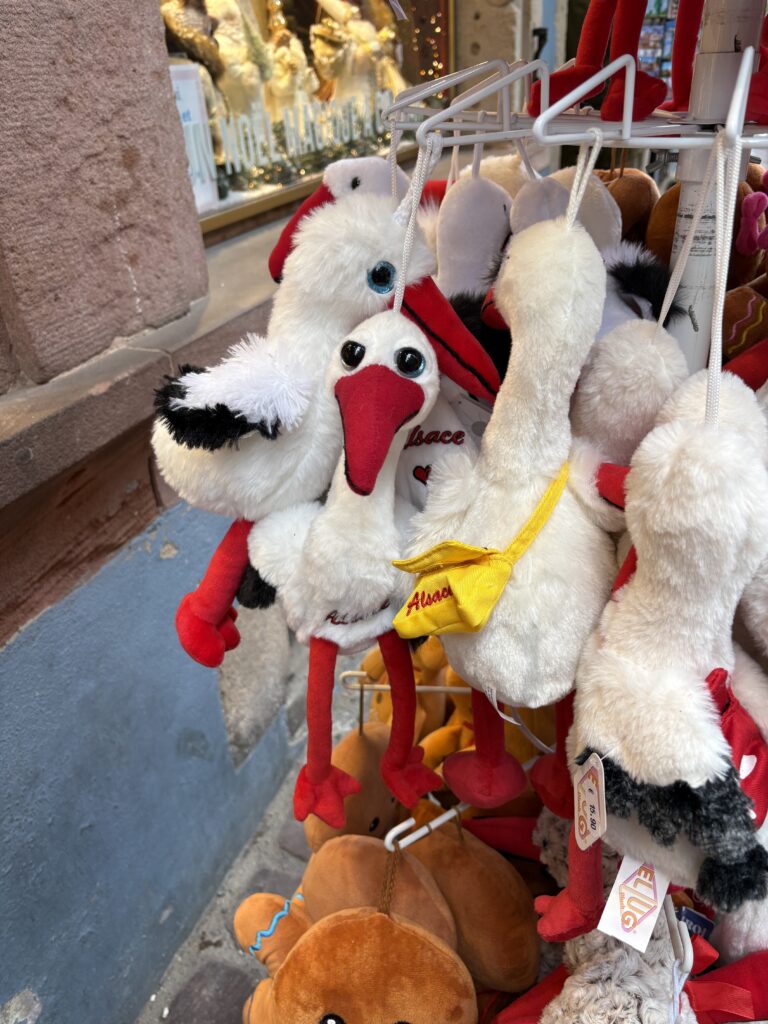
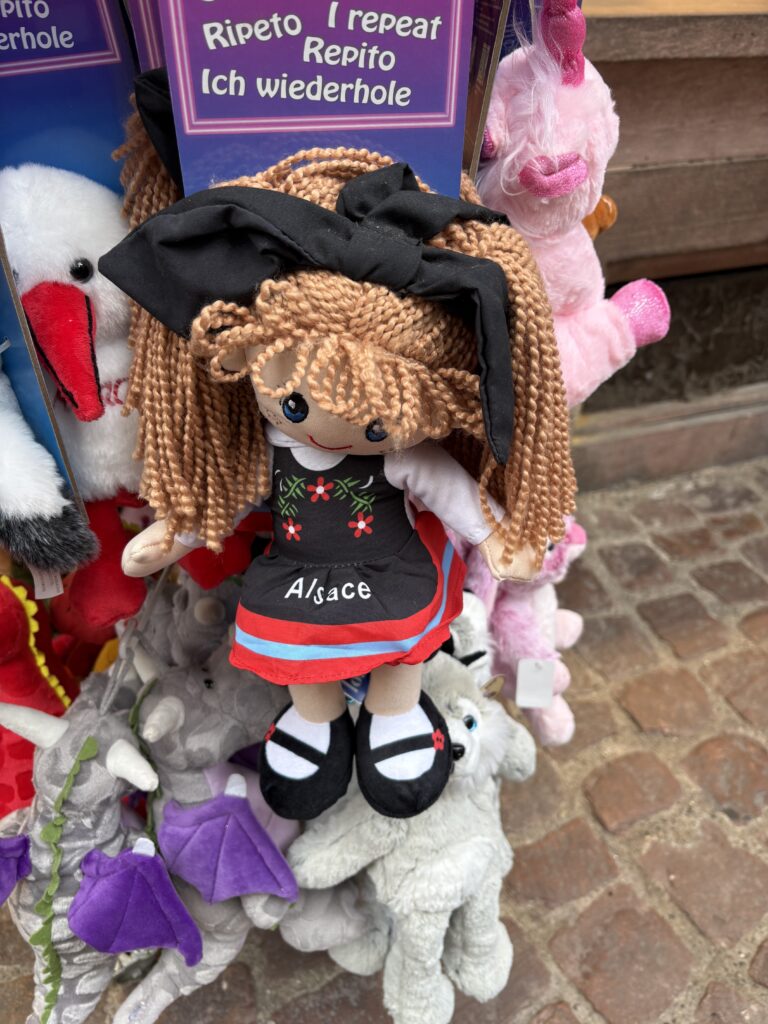
And when I went to the bakery next to where Jude was staying for our breakfast order, I saw this sign. I already knew that Jude would want one as he has been a great fan of the Grittibänz in Switzerland. However I had no idea that it had it’s own story!
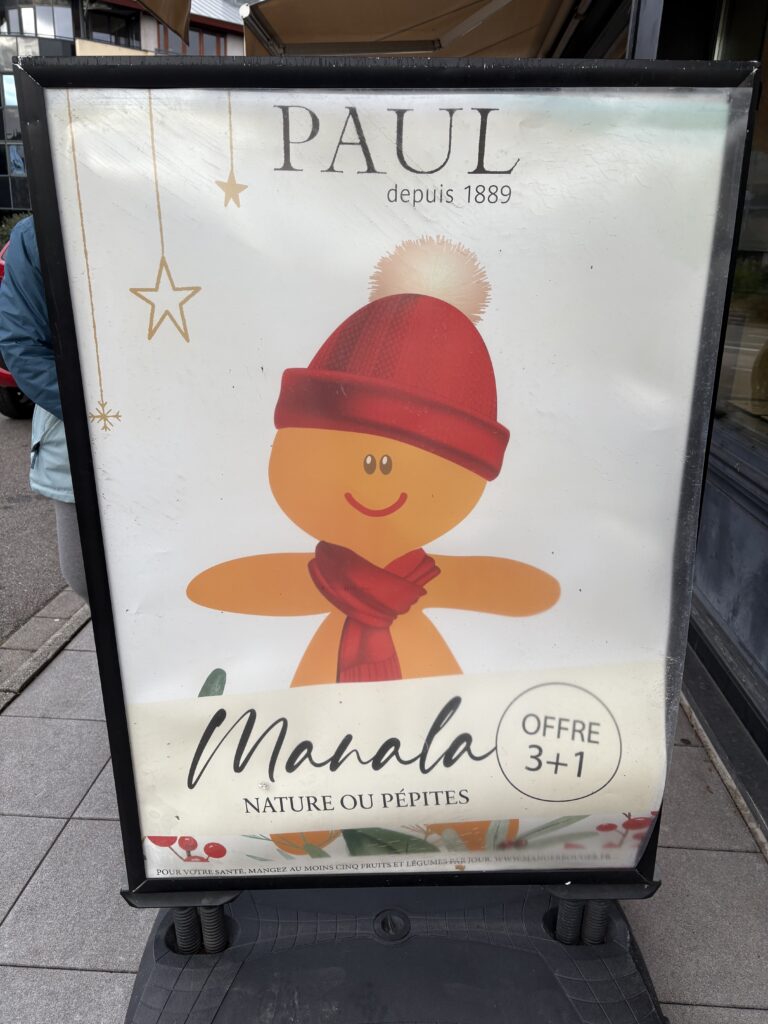

So to the story. It’s one of a series of 5 stories from around France including Le Cheval de Camargue and Le Pêcheur et la sirène de Belle-Île.
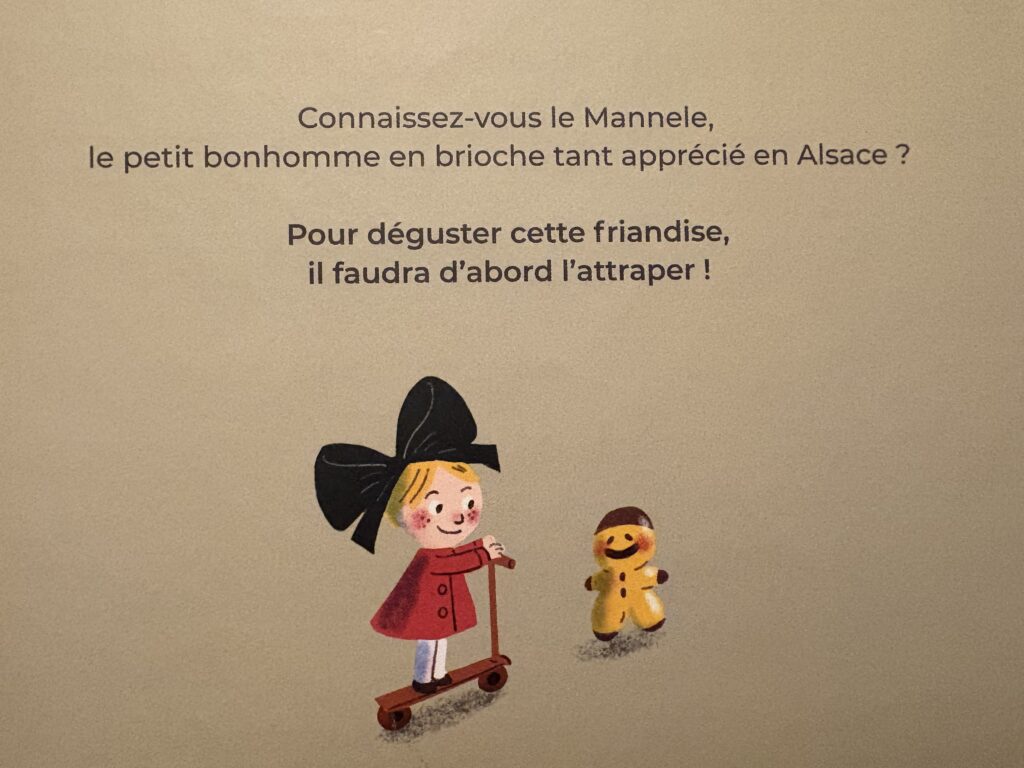
The story is recognisable as it follows the same structure as the Gingerbread Man. Maman is baking a ‘mannele’ for her 7 children who eagerly await it coming out of the oven. As soon as Maman opens the oven door, off he shoots crying –
“Je suis le mannele et je cours plus vite que vous. Si vous voulez me manger, il faut d’abord m’attraper!”
The children and Maman set off in pursuit and are soon joined by a knitting chicken (une poule en finette que tricote des chaussettes) a cow in slippers (une vache en schlappe) a stork carrying triplets (une cigogne qui apporte des triplés) a cycling granny (une mémé en vélocité) who chase la mannele across the countryside until he nearly runs in front of a train only to be saved by a little girl with a huge bow in her hair, riding a scooter (une fillette en trottinette avec un schlupf sur la tête) who picks him up and prevents him from being turned into une crêpe. In spite of this, le mannele still finds himself eaten as everyone goes back to the house and… Quel délicieux goûter!
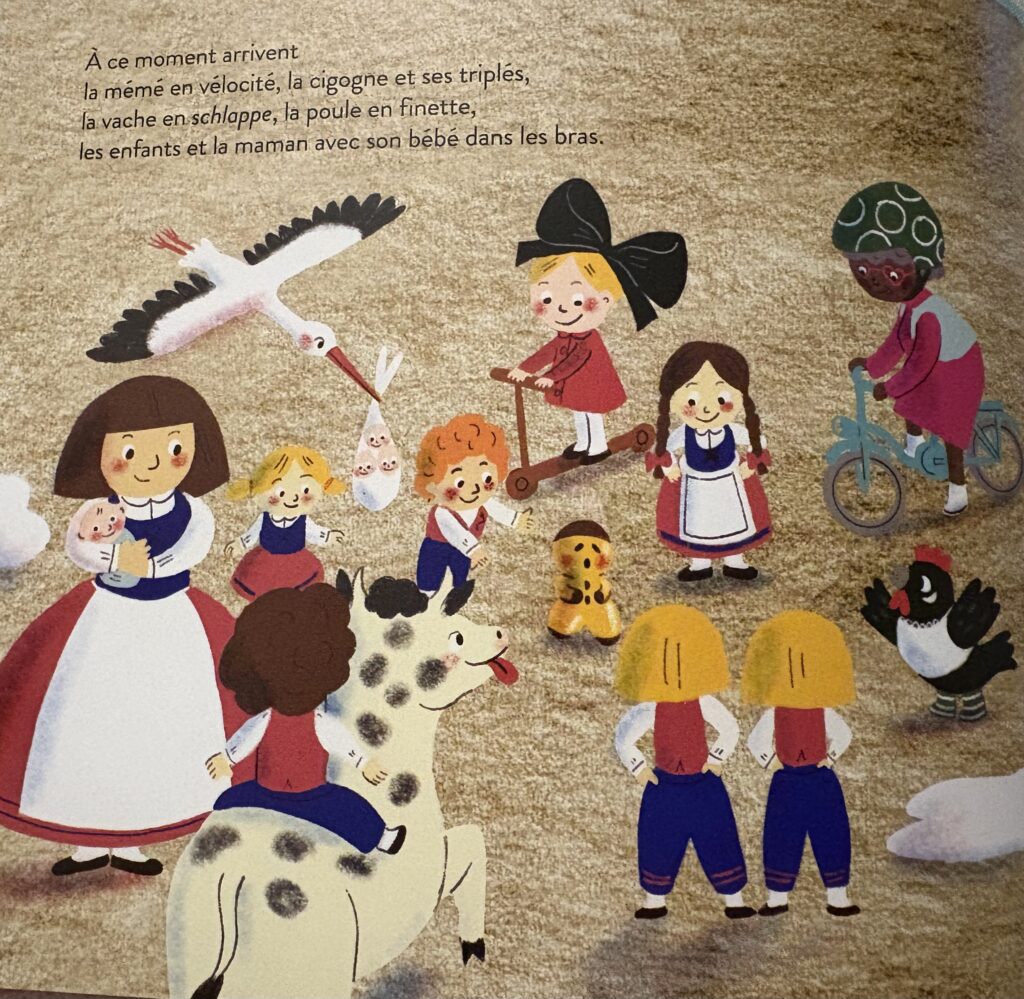
The story is fun and I liked the repetition of the Mannele’s cry as well as the list of the pursuers which all contain a rhyme. However, my favourite part was the use of a glossary explaining Alsatian terms/vocabulary:
la mannele – un petit bonhomme de brioche quel’on confectionne traditionnellement à la Saint-Nicolas
finette – maillot de corps
schlappe – pantouffles (prononcer << chloppeu >>)
Nounndabouckelnoramol! – Écriture phonétique, intrduisible
un schlupf – Nœud à la alsacienne (prononcer << chloupf >>
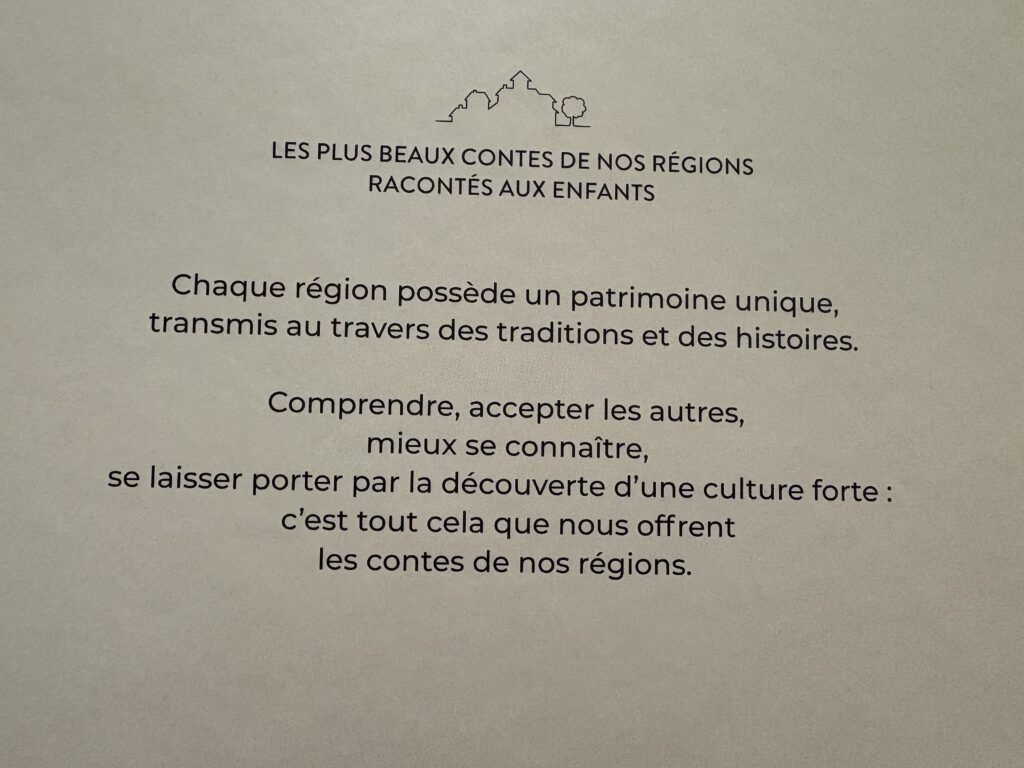
I also learned the word une mémé which I don’t recall having met before!
Whilst in Colmar I discovered that they call the little brioche men manala (as Jude said like Malala but with an n!) I can also confirm that they are delicious!
And I do think I suit a Schlupf!

